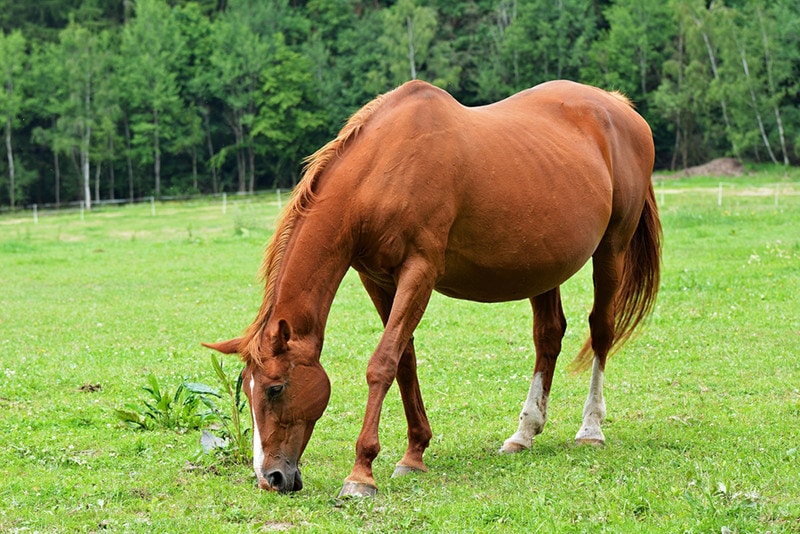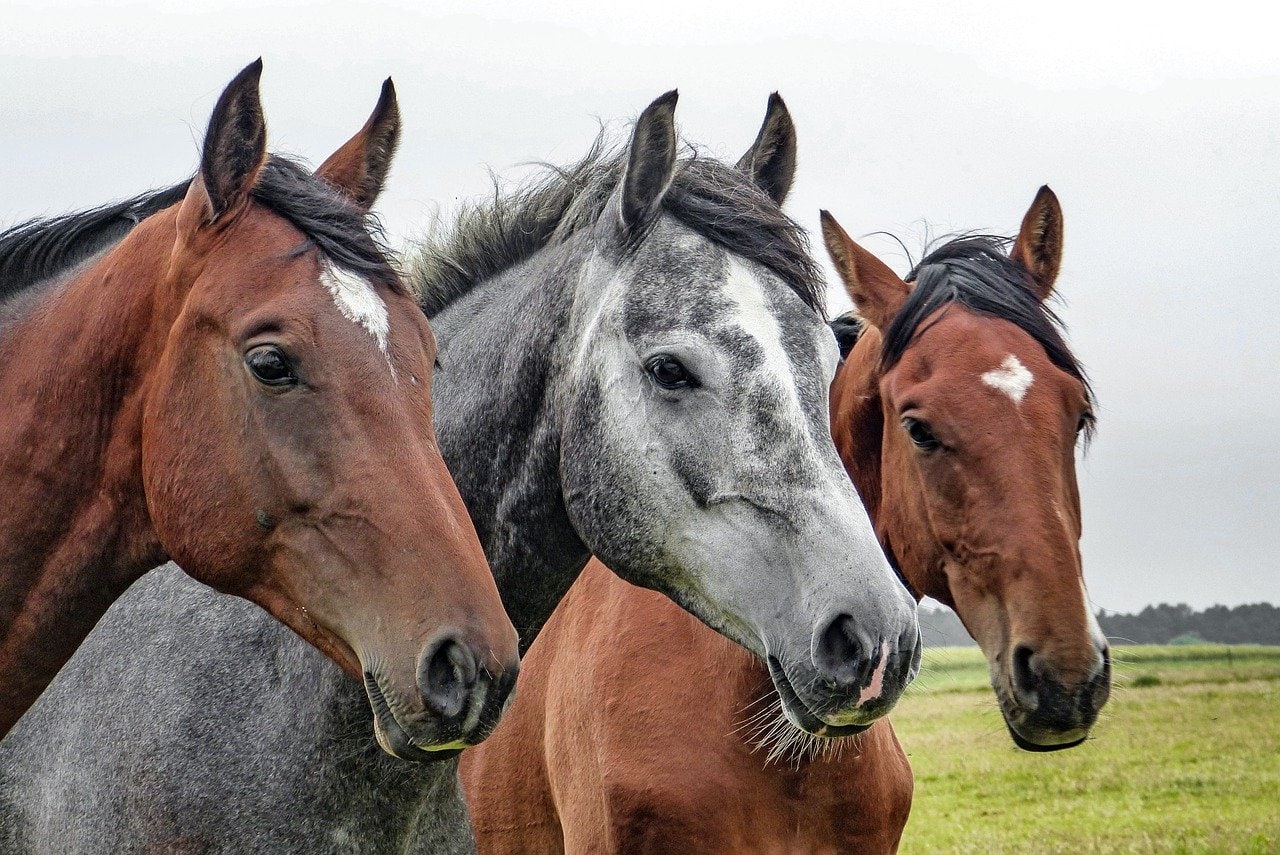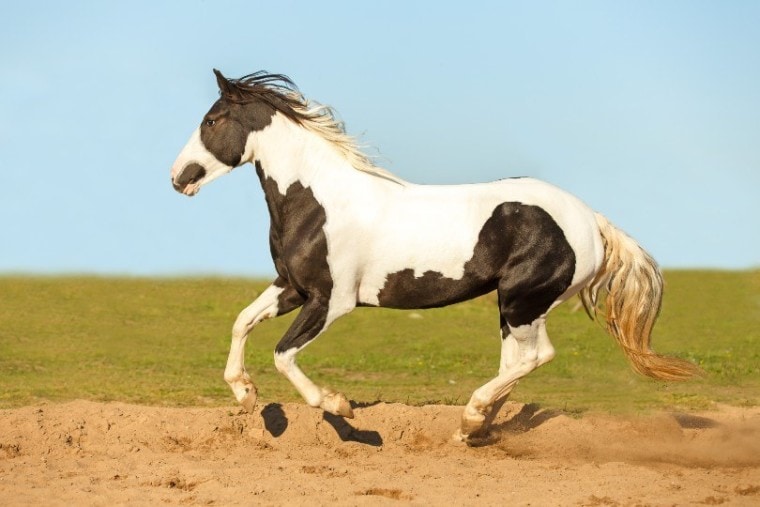
You can find pinto horses running wild throughout the United States. Native Americans captured these horses and used them for a variety of tasks, especially hunting. Some people even believed that pinto horses had magical qualities that could protect them and their families. While pinto horses (probably) don’t possess any supernatural qualities, they are beautiful creatures with an interesting history.
What Are Pinto Horses?
Many people think the pinto horse is a particular breed, but this isn’t quite true. Horses of any breed can have pinto coloration. Pinto is simply a specific color pattern. Any horse with a dark base color that has random patches of white and other colors is considered a pinto horse.

Paints and Pintos
Paint horses and pintos are often confused or mistermed for each other. Paint horses do have pinto coloration, though they have to be Thoroughbreds or Quarter Horses with verifiable pedigrees to be considered paint horses. Conversely, almost any breed can be a pinto, with the exception of draft horses and Appaloosas. So, Paint horses are always pintos but pintos aren’t always paints.
Pinto Horse Conformations
Since the pinto horse isn’t a specific breed, there are several types of pinto horse conformations. Stock Pintos generally have paint breeding from Quarter Horse lines. Hunter pintos are Thoroughbreds. Saddle Pintos are Tennessee Walking Horses, Saddlebreds, or Foxtrotters. Finally, Pleasure Pintos are most often Morgans or Arabians.
Pinto Horses in America
Even though there are many wild pinto horses in America, they’re actually classified as feral by the U.S. government. This breed isn’t native to the country, despite the fact that they’ve been here for hundreds of years. They were brought to America from Europe.
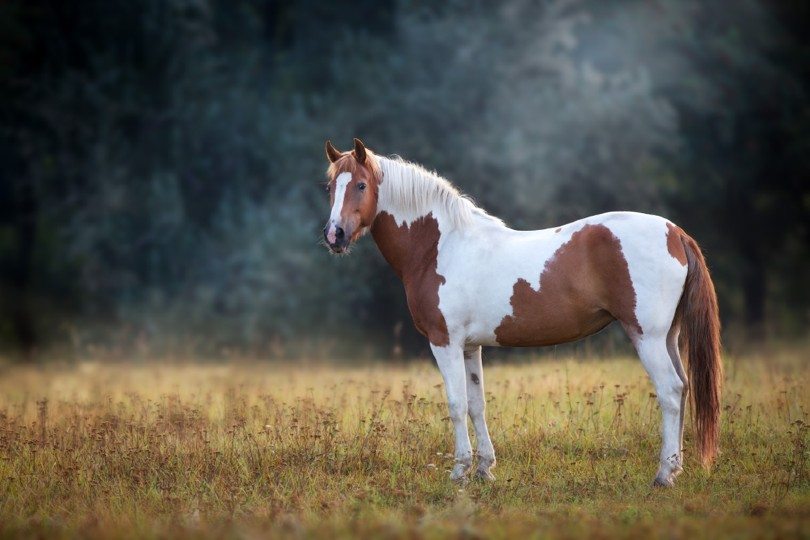
Sent to Be Set Free
Many pinto horses came to America with the settlers. But a large number of these horses were also sent from Europe so their owners could save face. Spotted horses were once all the rage in Europe. However, they had fallen out of favor by the 1700s, which meant that owning one could damage your reputation and status. As a result, thousands of pinto owners shipped their horses off to the new world to be set free, which meant they no longer had the political and social embarrassment of owning an out-of-fashion horse.
The 3 Pinto Patterns
There are three distinct pinto patterns, though only two are recognized by certain pinto horse associations.
1. Tobiano
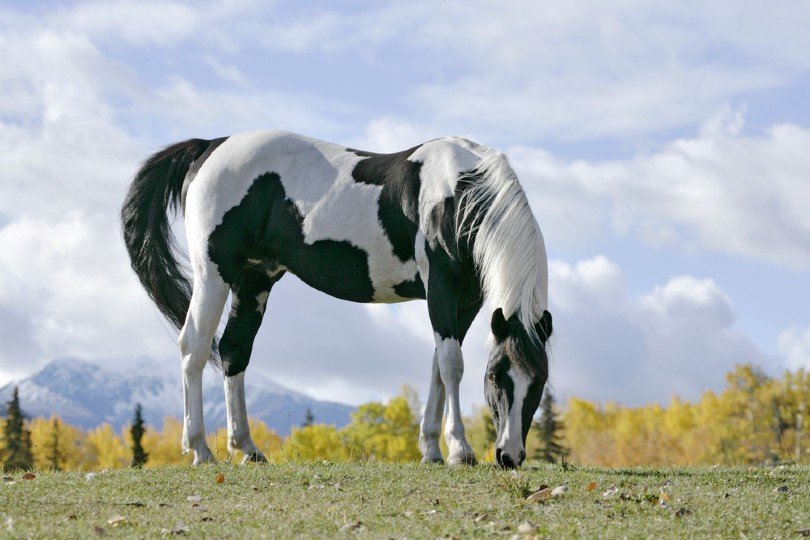
Tobiano pintos appear to have a base color of white with large spots of colors that can overlap and cause the horse to be more spotted than white. Spots are generally restricted to the chest, head, and flank, though some horses will have spots on the tail and rear as well.
2. Overo

Overo pintos look like their base color is dark, but they have jagged white patches and spots all over. The patches usually start near the belly, spreading out toward the neck, tail, and legs. Often, Overo pintos have white or bald faces and dark backs.
3. Tovero

Tovero pintos aren’t recognized by all pinto associations. They’re a mix of the Tobiano and Overo patterns.
Pinto Horse Sizes
Aside from the multiple types and conformations of pinto horses, they come in four distinct sizes. Standard pintos are a minimum of 56 inches in height or 14 hands. Ponies stand between 9.5 and 14 hands. Miniature horses are even smaller than ponies, standing 8.5 hands or shorter. Between ponies and miniature horses is a category called Miniature-B pinto horses. These horses are between 8.5 and 9.5 hands tall.
Final Thoughts
Most people mistakenly believe that pinto horses are their own breed. But pinto is a color, and almost any breed can be considered a pinto horse if they display the proper pattern. These horses have an interesting history and come in many variations. Hopefully, you’ve learned something interesting about these awesome creatures, which has only further piqued your interest in them!
Also See:
Featured Image Credit: Osetrik, Shutterstock




